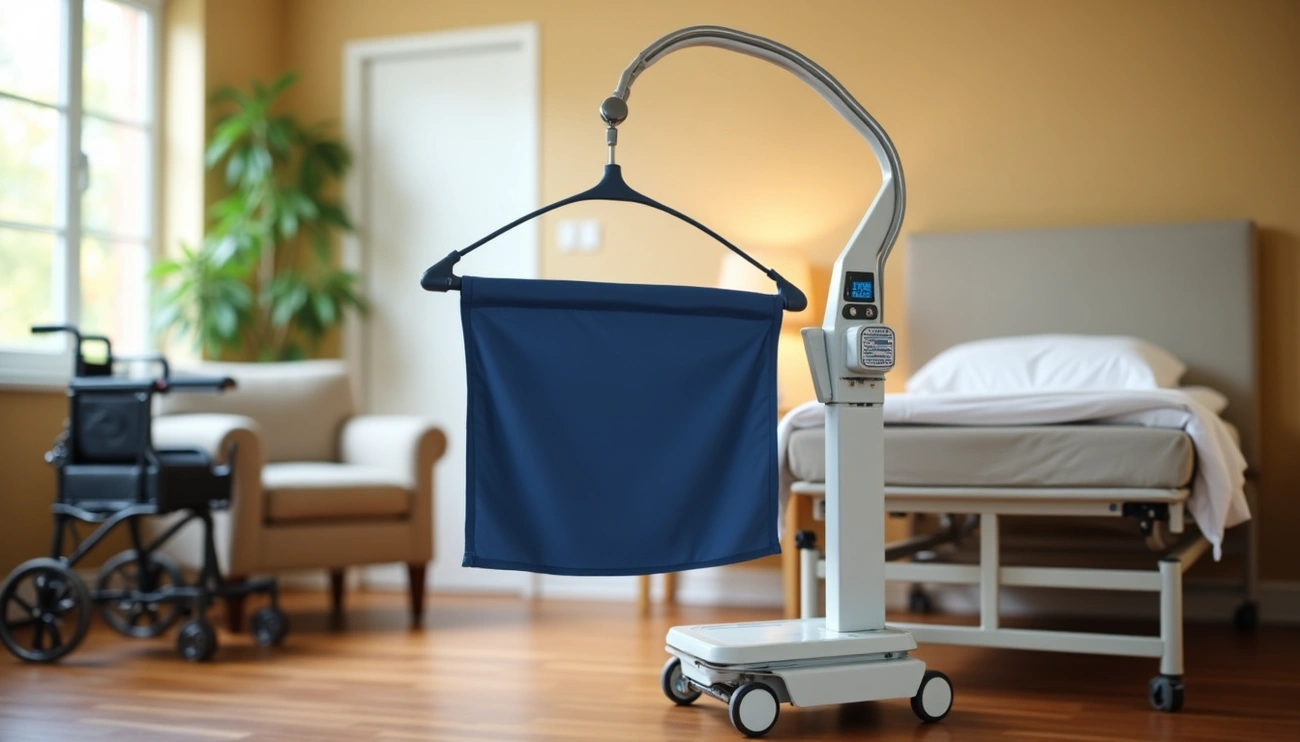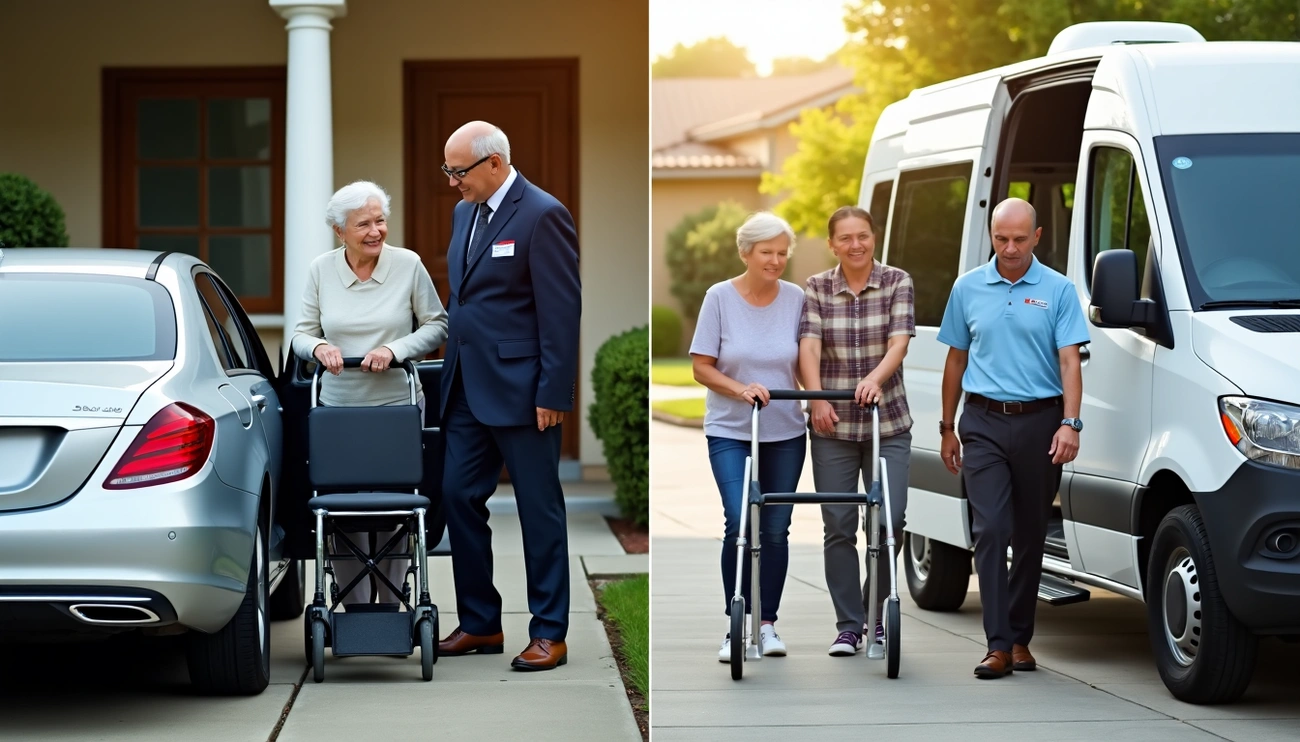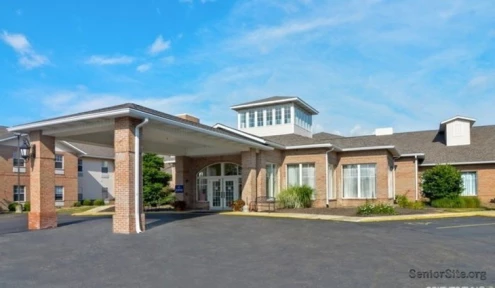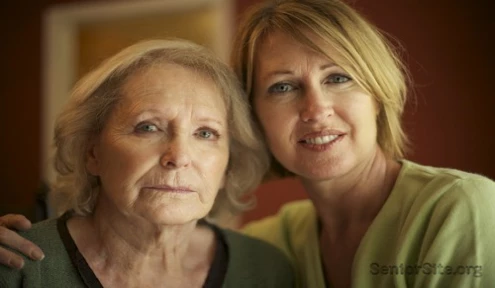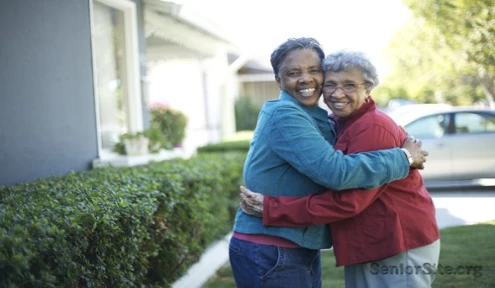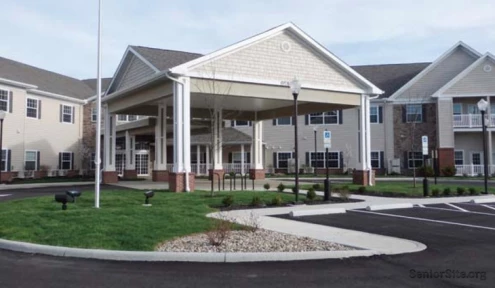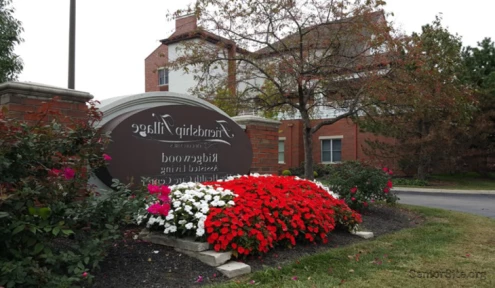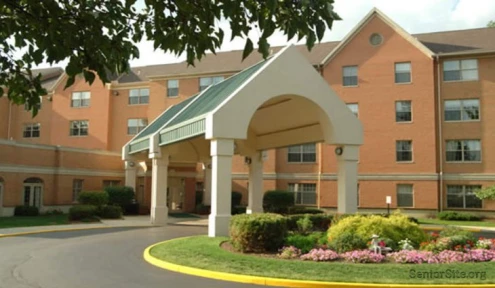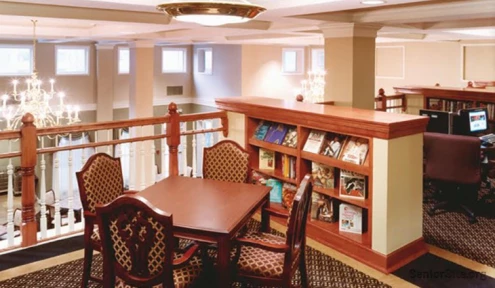Housing costs consume over 30% of income for one-quarter of senior homeowners and more than half of senior renters, federal data shows. The average Social Security payment of $1,905 per month leaves many struggling to find low cost housing for seniors within their means.
Several overlooked housing programs offer relief for seniors facing high costs. Housing voucher programs currently serve nearly 50% seniors and disabled households, capping their housing expenses at 30% of adjusted income. These assistance options help seniors secure affordable units even in competitive markets where low-cost housing remains scarce.
The programs range from government subsidies to creative housing arrangements that maintain quality and location while reducing costs. Recent data shows expanding options through public-private partnerships and specialized senior communities across different regions.
Senior Housing Costs Surge Across Facility Types in 2025
Monthly assisted living costs now reach $5,676 nationwide, marking significant increases across all senior housing categories. The price variations reflect a complex landscape of housing options and regional differences.
Average Housing Costs Hit New Highs
Independent living communities remain the most budget-friendly choice, costing between $2,000 and $4,000 monthly. Assisted living facilities charge $4,500 to $6,500 per month, while memory care services command premium rates of $6,100 to $8,200 monthly.
Recent data shows assisted living expenses jumped 18.89% since 2021. Nursing home costs followed suit, rising 4.40% to 4.92% since 2022. Labor shortages, inflation, and climbing insurance rates drive these increases.
Location Determines Price Tags
Geographic location plays a decisive role in housing costs. Vermont tops the list as the priciest state for assisted living, while Mississippi offers the lowest rates. Midwest and Southern states typically beat Northeast and West Coast prices.
Key factors creating regional price differences include:
- Real estate market values
- Healthcare policy variations
- Local economic factors
- Supply and demand dynamics
Hidden Charges Add Up
Facility base rates tell only part of the story. Additional fees often surprise residents:
- $12 for each blood pressure check
- $50 per medication injection
- $93 monthly for external pharmacy management
- $315 monthly for daily inhaler assistance
Many facilities use point-based pricing systems, assigning points to services based on staff time. Total points determine care tiers and costs. Move-in deposits and entrance fees range from $500 to $2,000, plus yearly cost increases of 3% to 6%.
Care costs escalate as needs change. Cognitive care packages start at $1,325 monthly for basic help but reach $4,625 for full support. Extra charges apply for room service meals, daily wellness checks, and medication monitoring.
The true cost picture emerges only after factoring in these additional expenses. Smart financial planning requires understanding both base rates and potential add-on charges that can significantly impact monthly budgets.
Government Programs Cut Housing Costs for Seniors
Federal and state agencies offer housing assistance programs many seniors never discover, reports show. These programs slash housing expenses through rental assistance, home modifications, and specialized veteran benefits.
State Programs Target Local Needs
State housing initiatives operate through Area Agencies on Aging, creating location-specific support systems. California’s Department of Aging runs subsidized housing complexes built for low-income seniors, plus reduced-rate public housing units.
Section 8 vouchers help seniors rent private market units through local housing authorities. Recipients pay just 30% of monthly household income toward rent. Most areas report waiting lists spanning months or years.
States also provide:
- Safety modification loans and grants
- Energy cost reduction programs
- Emergency rent help
- Local authority assistance
VA Benefits Open Housing Doors
The U.S. Department of Veterans Affairs (VA) runs extensive housing programs for senior veterans. VA home loans lead these offerings, providing favorable terms for buying, building, or refinancing homes.
Disabled veterans qualify for targeted grant programs:
- Special Home Adaptation (SHA) grants for permanent disabilities
- Specially Adapted Housing (SAH) grants for independent living
- Home Improvements and Structural Alterations (HISA) grants for service disabilities
State Veterans Homes offer care ranging from independent living to nursing support. These Medicare and Medicaid-certified facilities provide round-the-clock nursing care and pharmacy services. Veterans with 70%-100% Service Connected Disability ratings may receive Federal VA-covered nursing care.
Aid and Attendance (A&A) benefits help qualified veterans and surviving spouses pay for daily assistance. These benefits reduce residential care costs in senior communities.
The HUD-VASH program pairs housing vouchers with support services, helping homeless veterans secure permanent housing. Veterans must meet service requirements and stay within Congressional income limits to access these benefits. Applications start through eBenefits or local VA offices.
Alternative Housing Models Cut Senior Living Costs
Senior housing options now extend far beyond traditional retirement homes. Recent data shows growing adoption of shared living spaces, virtual communities, and cooperative housing arrangements that combine affordability with social connection.
Home Sharing Cuts Costs
Los Angeles alone reports over 1 million empty bedrooms suitable for shared housing arrangements. Home sharing programs match senior homeowners with compatible housemates, often younger tenants who exchange help with daily tasks for reduced rent.
Success rates prove promising – one program reports 94% successful matches lasting 2.5 years on average. Companies like Silvernest now screen potential housemates, ensuring safe, compatible living arrangements.
Virtual Villages Support Aging in Place
Membership-based virtual retirement communities help seniors stay in their homes. Annual dues run $450 to $600, providing access to:
- Service referral networks
- Transportation help
- Group activities
- Volunteer assistance
The model shows rapid growth, with 280 villages now operating nationwide. Specialized communities serve diverse groups, including Asian American and African American seniors.
Co-ops Create Affordable Communities
Senior cooperative housing lets residents buy shares instead of units. The model requires:
- One-time share purchase (50% of unit value)
- Monthly maintenance and utility fees
- Community participation
Limited equity cooperatives (LECs) dominate the sector, prioritizing long-term affordability. Shareholders qualify for homeowner tax breaks on mortgage interest and property taxes. The focus on resident wellbeing over profits attracts seniors seeking both community and value.
Recent data shows seniors increasingly choose these creative options over traditional facilities. Each model provides unique benefits while helping residents maintain independence and access needed support services.
Tax Benefits and Energy Programs Slash Senior Housing Costs
Senior homeowners unlock substantial savings through tax advantages and energy efficiency programs. Recent data shows these strategies significantly reduce monthly housing expenses.
Tax Programs Offer Relief
Property tax deferrals help homeowners aged 65 and older manage costs. Seniors earning under $96,000 annually pay just 3% of last year’s income toward property taxes. The program creates property-secured loans with 5% interest caps.
Tax benefits extend to assisted living costs when facilities provide personal care. Higher standard deductions apply to seniors over 65. Qualifying caregiver expenses also merit tax breaks.
Social Security recipients face varying tax obligations based on total income and filing status. Many seniors living solely on Social Security bypass federal tax filing requirements entirely.
Energy Programs Cut Monthly Bills
Federal grants through the Low-Income Home Energy Assistance Program (LIHEAP) help seniors tackle utility costs. The program covers immediate bills while funding energy-saving home improvements.
The Weatherization Assistance Program (WAP) delivers lasting savings through:
- Energy upgrades for all housing types
- Improvements for owned and rented homes
- Permanent utility bill reductions
State emergency programs prevent service shutoffs during extreme weather. Energy companies offer senior-specific benefits including:
- No-cost energy assessments
- Rate reductions
- Payment plans
- Free efficiency devices
Simple changes yield quick savings. LED bulbs, unplugged devices, and door weatherstripping reduce costs immediately. Smart thermostats optimize temperature control automatically.
Water heater modifications create additional savings. Setting temperatures to 120 degrees and adding insulation jackets cuts energy use. Strategic window covering use blocks heat gain, reducing cooling expenses.
Local utilities provide free efficiency tools and tracking resources. These offerings complement federal and state programs, helping seniors minimize housing costs through improved energy management.
Housing Application Process Demands Precise Documentation
Housing authorities reject 65% of senior housing applications due to incomplete online profiles. Success rates improve dramatically when applicants follow specific documentation requirements and timelines.
Required Papers Show Eligibility
Housing authorities require specific verification documents:
- Birth certificate or passport
- Social Security cards for household members
- Government photo ID
- Three months of address records
- Marriage certificate if applicable
- Three-year rental history with contacts
Financial records must include:
- 12 months of financial statements
- Social Security documentation
- Pension records
- Bank statements
- Investment information if applicable
Application Steps Follow Set Timeline
Local Housing Authorities (LHA) process applications in stages. Initial submissions need no documents. The LHA requests paperwork once applications reach waitlist top positions. Verification takes two to twelve months after submission deadlines.
Housing authorities review applications through:
- Initial screening
- Background checks
- Reference calls
- Income verification
- Final approval decision
Common Mistakes Delay Approval
Application errors derail housing requests. Key problems include:
- Missing 10-day document deadlines
- Using expired financial records
- Estimating income figures
- Showing data inconsistencies across forms
Quick responses to housing authorities matter most for verification, even without complete documentation. Profile updates throughout waiting periods prevent waitlist removal from missed verification requests.
Section 202 housing needs direct property manager contact. Most locations maintain waitlists, requiring prompt outreach to suitable communities. Current contact information ensures receipt of housing authority updates.
Housing offer rejections trigger waitlist removal. Three refusals lead to removal from all applied housing authority lists. Each offer needs careful consideration while maintaining clear communication with authorities.
Senior Housing Options Expand Beyond Traditional Choices
Recent data shows seniors access affordable housing through multiple channels despite market pressures. Government programs, shared living arrangements, and strategic cost management create viable alternatives to standard retirement communities.
Housing assistance reaches more seniors than commonly known. State programs and veterans’ benefits provide substantial aid, while tax advantages and energy upgrades slash monthly costs. Federal data shows qualified seniors often miss these opportunities simply from lack of awareness.
Early applications and complete documentation boost success rates significantly. Housing authorities report faster placements for seniors who maintain current records and respond quickly to information requests. Though waitlists stretch months or years, prepared applicants secure suitable housing matching both budget and lifestyle needs.
FAQs
Q1. What are some affordable housing options for seniors? There are several affordable housing options for seniors, including government-assisted programs like Section 8 vouchers, public housing, and Section 202 Supportive Housing. Other creative solutions include home sharing programs, virtual retirement communities, and cooperative housing options. These alternatives can help seniors find suitable living arrangements that fit their budget and needs.
Q2. How can seniors reduce their housing costs? Seniors can reduce housing costs through various methods. Taking advantage of tax benefits, such as property tax deferrals and medical expense deductions, can provide significant savings. Additionally, participating in energy efficiency programs like LIHEAP and WAP can lower utility bills. Simple strategies like using LED bulbs, adjusting water heater temperatures, and utilizing smart thermostats can also contribute to cost reduction.
Q3. What documents are required when applying for low-cost senior housing? When applying for low-cost senior housing, essential documents typically include a birth certificate or passport, Social Security cards for all household members, a government-issued photo ID, address verification documents, and financial records. It’s crucial to have 12 months of financial statements, Social Security statements, pension documentation, and bank statements ready for the application process.
Q4. How long does the application process for senior housing usually take? The application process for senior housing can vary in length. Initially, you can start an application without uploading documents. Once your application reaches the top of the waitlist, you’ll be asked to provide additional documentation. The verification process typically spans two to twelve months after the application deadline. It’s important to respond promptly to housing authorities throughout this period.
Q5. Are there special housing benefits for senior veterans? Yes, senior veterans have access to various housing benefits through the U.S. Department of Veterans Affairs (VA). These include VA home loans, Special Home Adaptation (SHA) grants, Specially Adapted Housing (SAH) grants, and Aid and Attendance (A&A) benefits. Additionally, the HUD-VASH program assists veterans experiencing homelessness in finding permanent housing. State Veterans Homes also offer various levels of care for eligible veterans.

